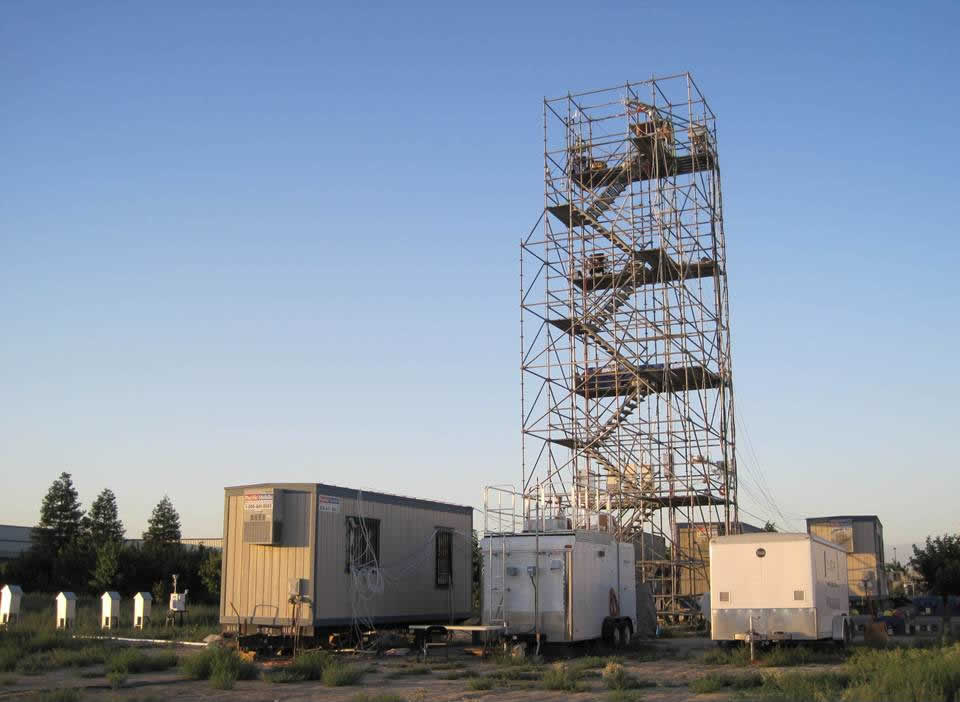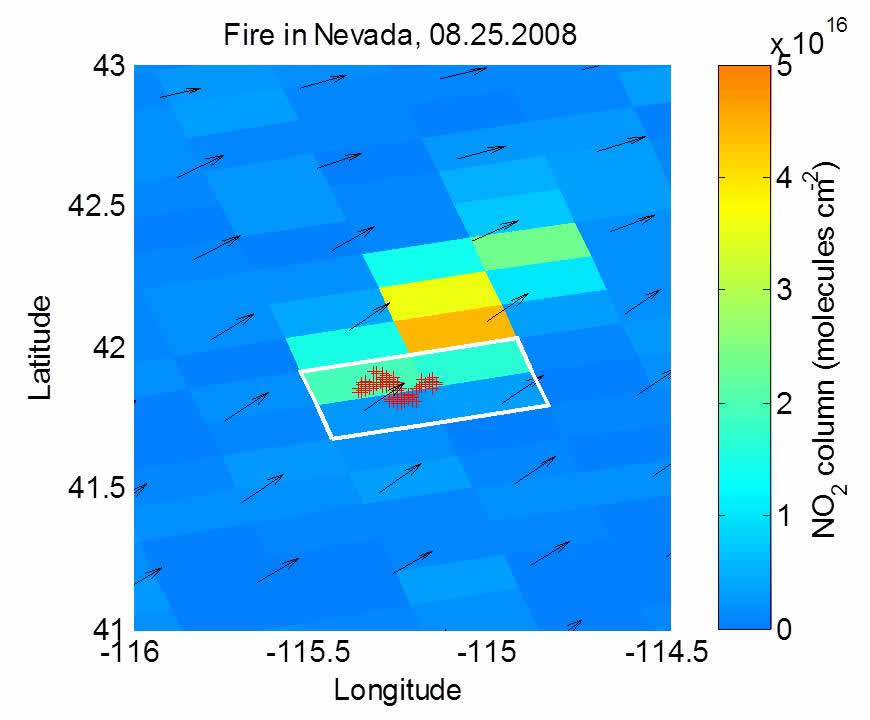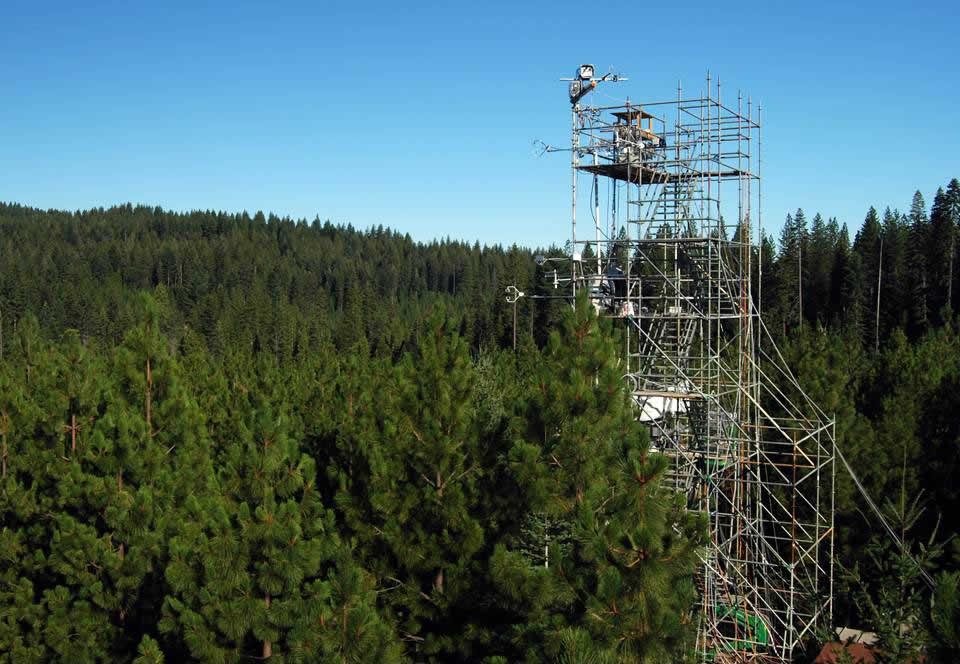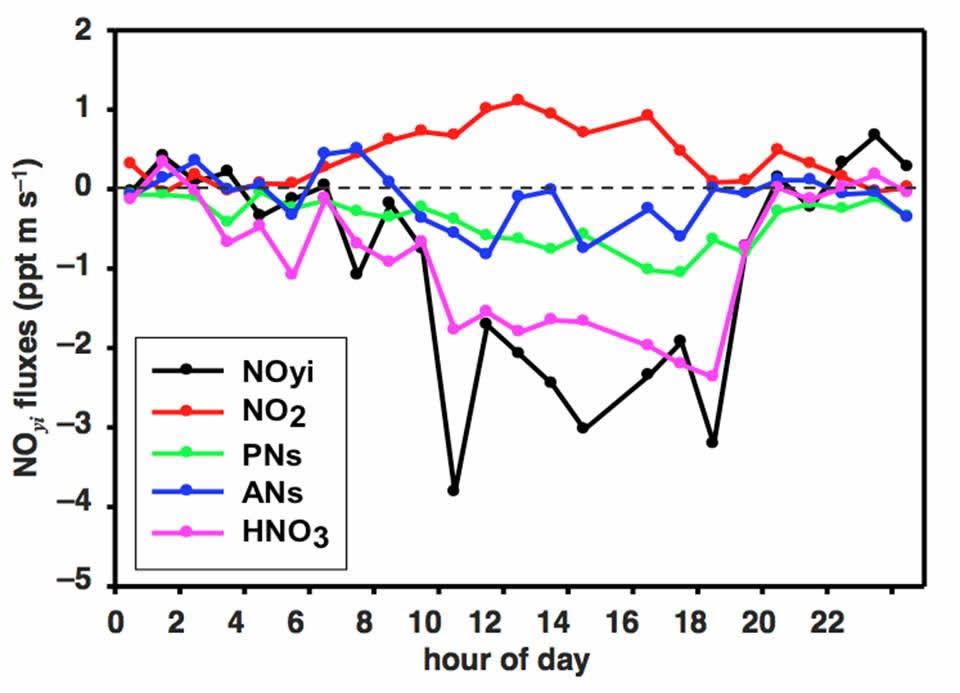Nitrogen (N) moves through the biosphere and atmosphere through several complex processes. Our work primarily focuses on understanding the role of nitrogen oxides (NOx = NO + NO2) in N cycling, as NOx is a pollutant emitted from both anthropogenic (through fossil fuel combustion processes) as well as biogenic sources such as wildfires and soils, and participates in oxidative chemistry that can result in other pollutants that also have important climate effects, such as aerosol and tropospheric ozone. We aim to improve understanding of the processes that govern NOx emission, the subsequent chemistry that results in formation of ozone and aerosol, and the pathways by which NOx is temporarily or permanently removed from the atmosphere.
Anthropogenic emissions
Anthropogenic activities represent the largest source of NOx emissions in today’s world, with approximately 50% of NOx coming from fossil fuel burning. NOx is formed during combustion of fossil fuels by oxidation of N in the fuel (e.g. coal), and/or as a product of dissociation of N2 and O2 at high temperatures. Thus NOx concentrations in most locations are directly impacted by energy consumption; we can use this relationship to help inform policy decisions on regulations regarding air quality and energy efficiency. Subsequent chemistry of NOx is also of interest, as NOx impacts ozone and aerosol formation (both of which are air quality concerns and have important climate effects), helps regulate atmospheric oxidation, and can have far-reaching impacts through chemical transport of NOx reservoir species like peroxy nitrates. We have participated in several measurement campaigns examining how NOx emitted by human activities is chemically processed and transported through the atmosphere; please check out our publications page to learn more.

Soil Emissions
Soils are responsible for approximately 20% of global NOx emissions. These emissions are the result of microbial activity within the soil (e.g. denitrification). The processes governing this emission are not well understood, but emissions seem to correlate best with water-filled pore space, temperature, and N availability. We have synthesized information from satellite data and models of soil NOx emissions, demonstrated that soil NOx emissions can be observed from space, and developed new mechanistic models for soil NOx emissions that agree better with observations.

Reference:
R. C. Hudman, N. E. Moore, A. K. Mebust, R. V. Martin, A. R. Russell, L. C. Valin, and R. C. Cohen, Steps towards a mechanistic model of global soil nitric oxide emissions: implementation and space based-constraints, Atmos. Chem. Phys. 12, 7779-7795, 2012.
Biomass Burning
Biomass burning contributes approximately 15% of NOx emission to the atmosphere. This source is partly natural and partly anthropogenic in nature, as fires are often due to human activity. Biomass burning NOx emissions are highly variable from fire to fire depending on several properties, including the temperature of combustion within the fire and the N content of the fuel (as most NOx from biomass burning is formed via oxidation of this fuel-based N). This variability is poorly constrained, owing to the difficulties of measuring large-scale wildfires and of reproducing these emissions in a laboratory setting. We use the large collection of observations of fire emissions of NOx obtained from satellite instruments to perform systematic, statistically rigorous analyses of the origins of this variability. Using observations in California and Nevada, we developed a technique that can distinguish relative differences in emissions between land types.

Reference:
A. K. Mebust, A. R. Russell, R. C. Hudman, L. C. Valin, and R. C. Cohen, Characterization of wildfire NOx emissions using MODIS fire radiative power and OMI tropospheric NO2 columns, Atmos. Chem. Phys. 11, 5839-5851, 2011.
Atmosphere-Forest Exchange
Quantifying the magnitude and direction of the exchange of nitrogen oxides between the atmosphere and forest is key to understanding low-NOx oxidative chemistry, nitrogen oxide and O3 transport and deposition, and N nutrient cycling. In one example, there is conflicting evidence about the role of the trees in the forest-atmosphere exchange NO2. For example, top-down studies have convincingly established that forests constitute a NOx sink due to direct foliar NO2 uptake, attenuating the escape of soil emissions from forest canopies. In contrast, leaf-scale studies suggest that fluxes may be bi-directional and that at very low ambient NOx concentrations trees act as NOx sources. In the Cohen Research Team, we study atmosphere-forest exchange through a combination of (1) canopy-scale field observations of eddy covariance fluxes and concentration gradients of NO, NO2, peroxy nitrates (RO2NO2), alkyl nitrates (RONO2), and HNO3, and (2) lab-based experiments of the rate of NO and NO2 exchange at the leaf scale. More information about one experiment, the Biosphere Effects on Aerosols and Photochemistry Experiment (BEARPEX), can be found in this ACP special issue.

